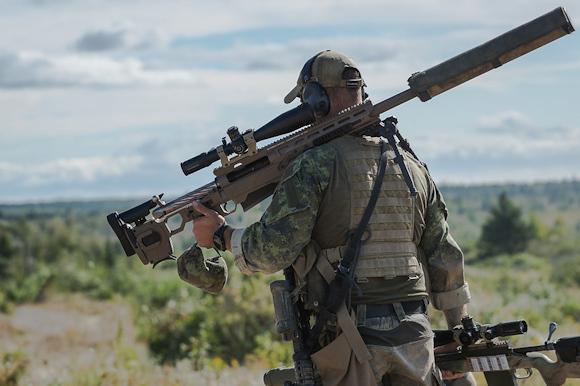The first experiments with large-caliber sniper rifles date back to the Korean War, with the use, for evaluation purposes, of the Soviet anti-tank rifles PTRS-41, modified in 12,7x99 mm caliber.
The choice of this ammunition was due to the high diffusion in western armies, as it was used by the Browning M-2 heavy machine gun. In addition, the .50 BMG offered extremely high drilling capabilities. To make a comparison, the standard stroke API (Armor Piercing Incendiary) in 7,62x51 mm is capable of drilling 14 mm of homogeneous steel at a distance of 100 meters, and 10 mm at 300 meters. An API .50 BMG bullet, on the other hand, is capable of drilling 25 mm of steel at 300 meters and 13 mm at 1.200 meters.
Therefore, with adequate ammunition, targets such as helicopters and airplanes on the ground (shooting against the turbine), command and control systems (radar antennas, communication systems), but also armored vehicles (shooting against optronic systems) can be engaged.
During the 1991 Gulf War, a Recon team from the US Marine Corps destroyed three Iraqi BMP-82 IFVs with a Barrett M-1A1 at a distance of more than 1.600 meters, hitting them in the engine compartment.
As in the case of lower caliber weapons, there are two categories of shotguns heavy sniping: single shot and / or ordinary manual repeating (bolt action) and semi-automatic models.
In Italy the first department to use these weapons (the Barrett M-82A1) were the raiders of the 9th assault rgt Col Moschin, Somalia in 1993. Subsequently they spread to the other special forces of the Co.FS (Command of the Forces Special), with models such as the McMillan M-87R, the Barrett M-90 (in bull pup configuration and manual repetition), the French PGM Hécate II and the British Accuracy International AS50.
In 2002, in Afghanistan, a Canadian soldier from the 3rd battalion of the Princess Patricia's Canadian Light Infantry, killed a Taliban by hitting him with a McMillan (named C-15 long range sniper weapon in the Canadian Armed Forces) from 12,7x99 mm to a distance of 2430 meters. With the same weapon, in 2017, a sharpshooter of the Canadian Special Operation Command managed to hit an Islamic state militant at a distance of 3.540 meters (he probably used the help of a mini drone).
Despite the record distances at which targets are shot down, the heavy sniping they are mainly used as anti-material weapons.
Photo: Canadian Armed Forces












